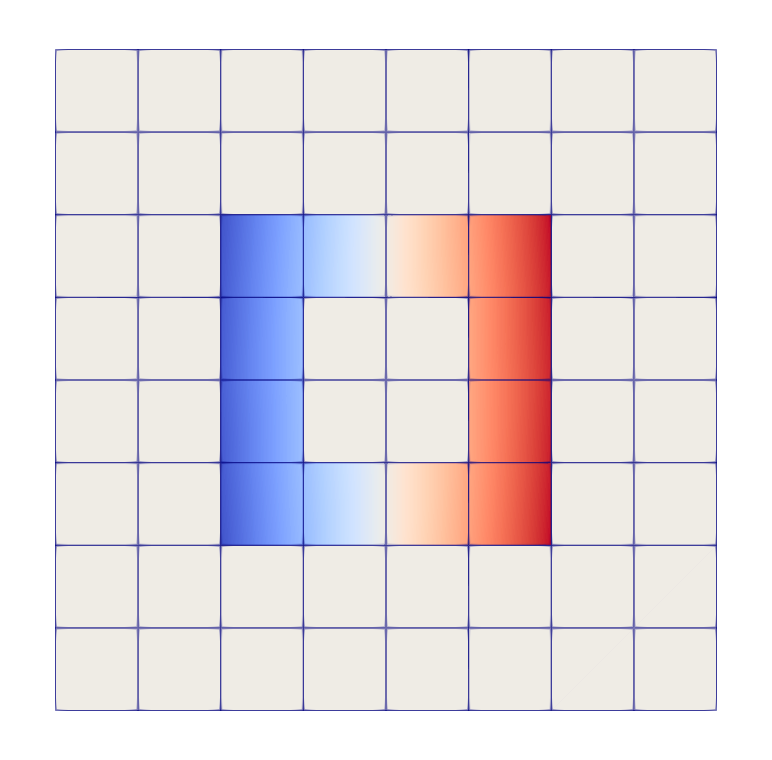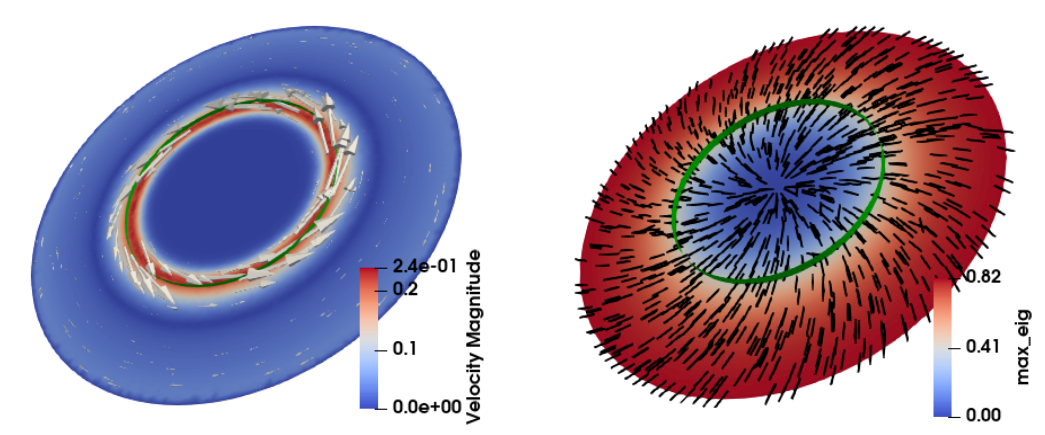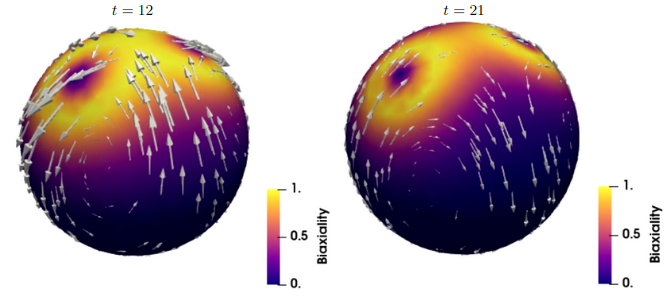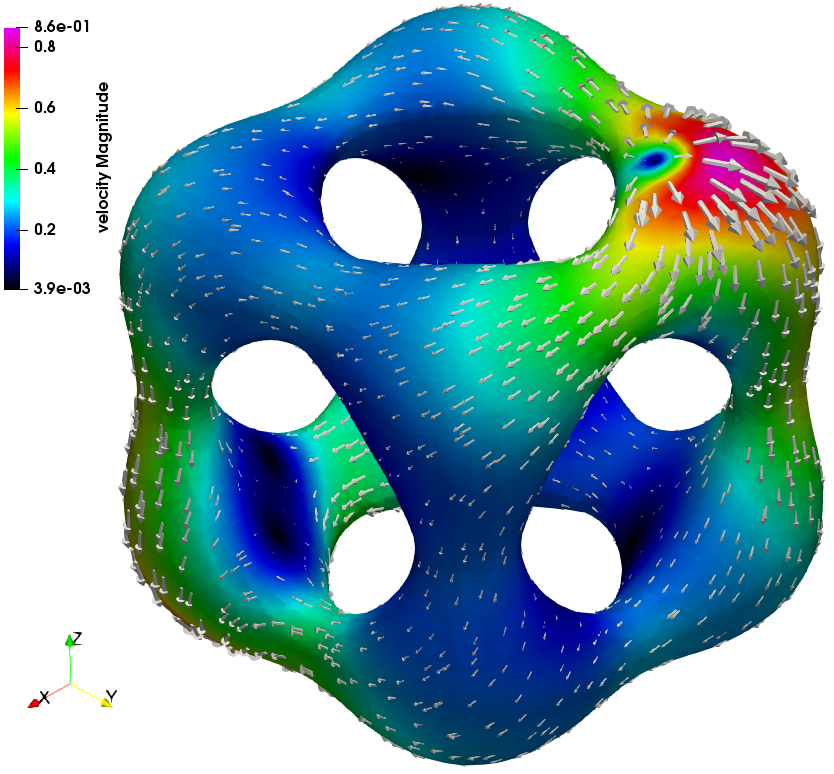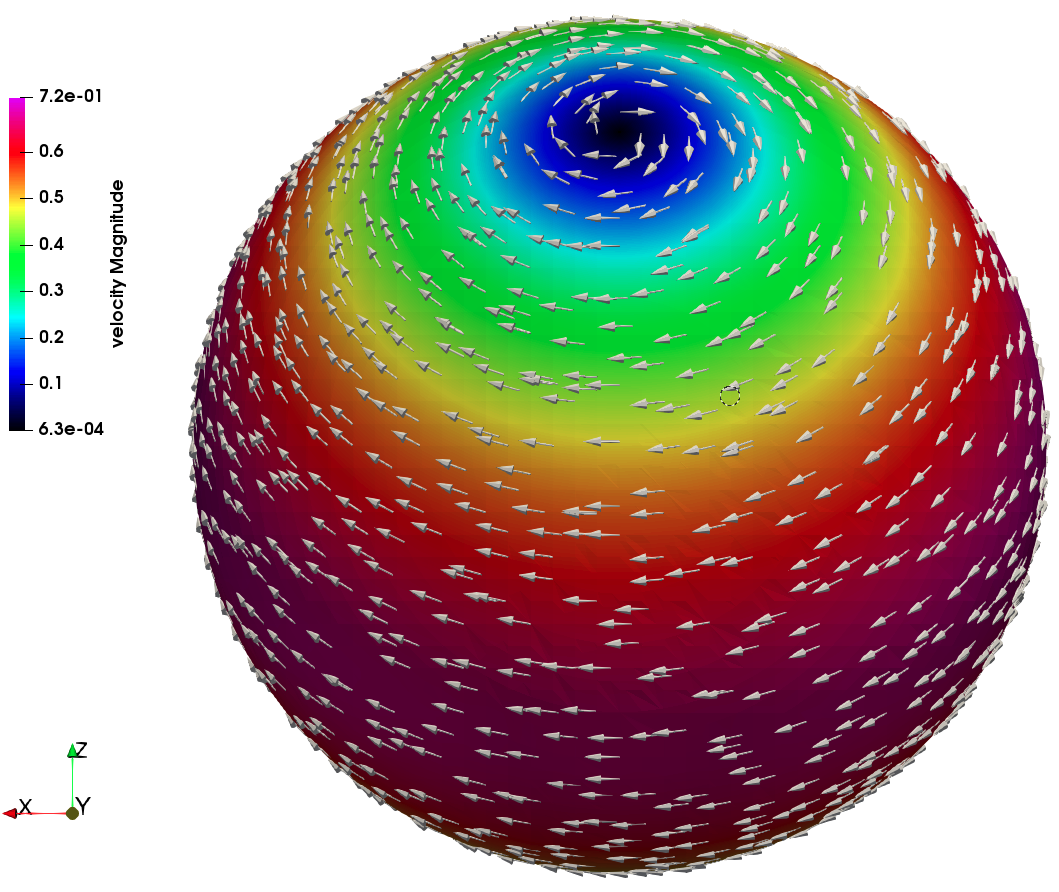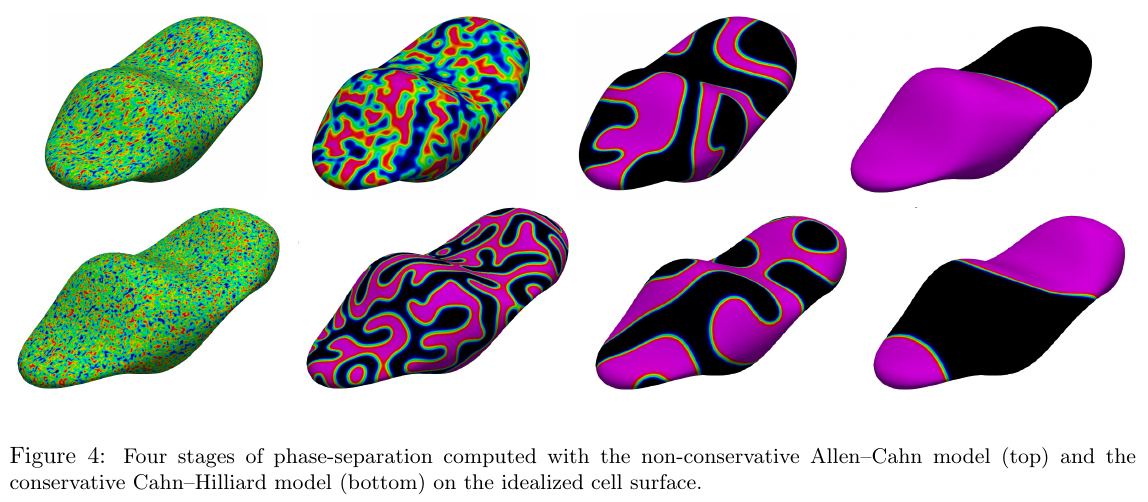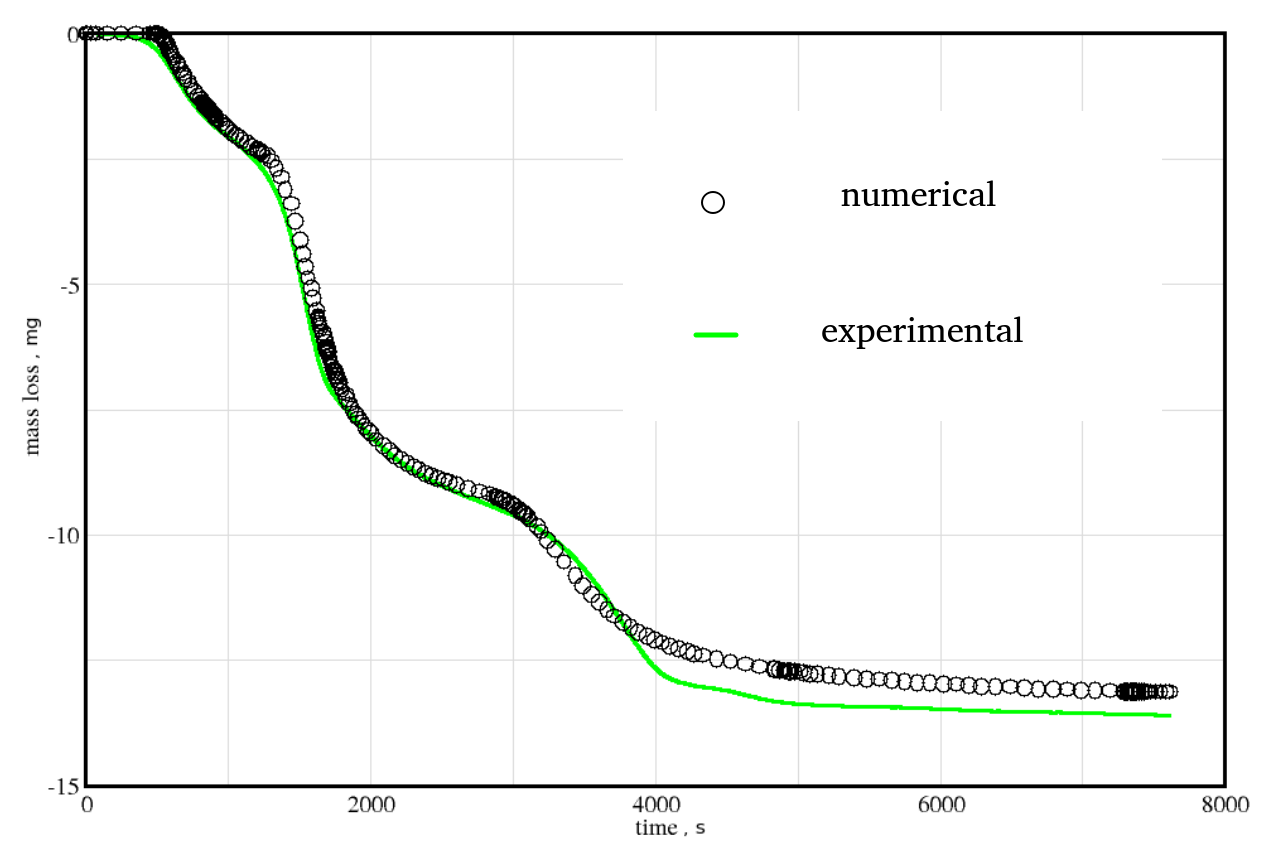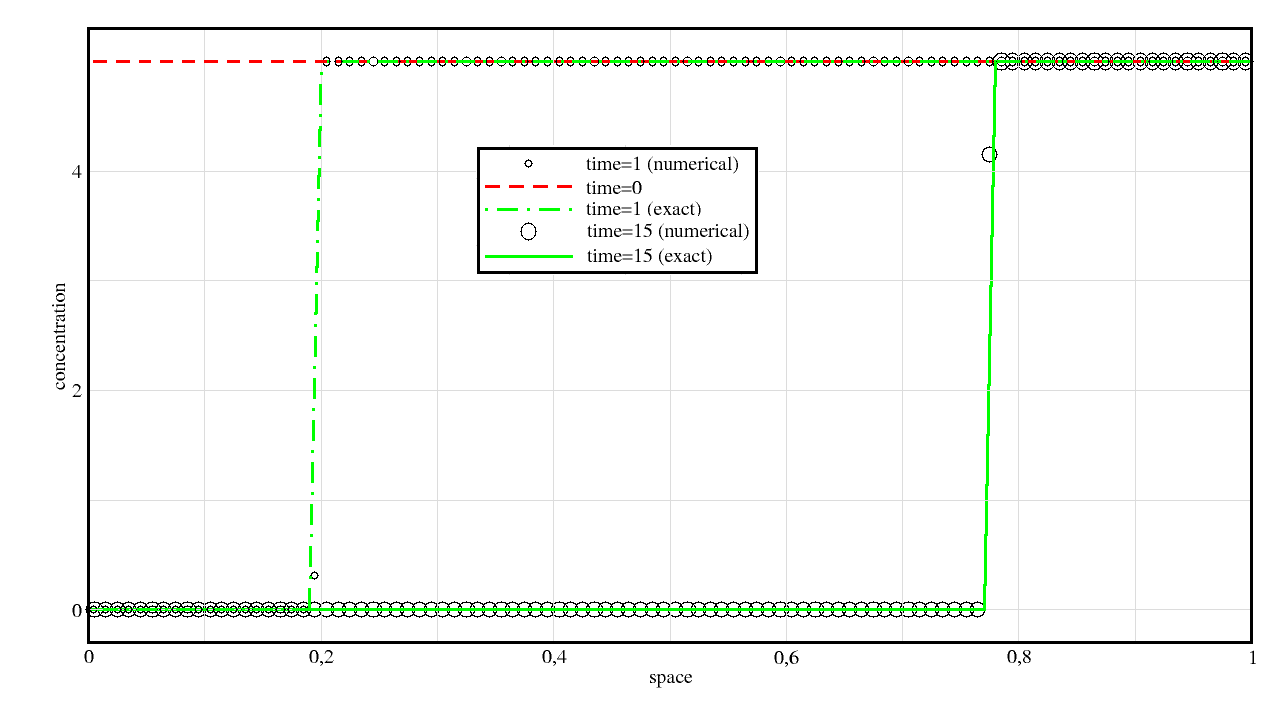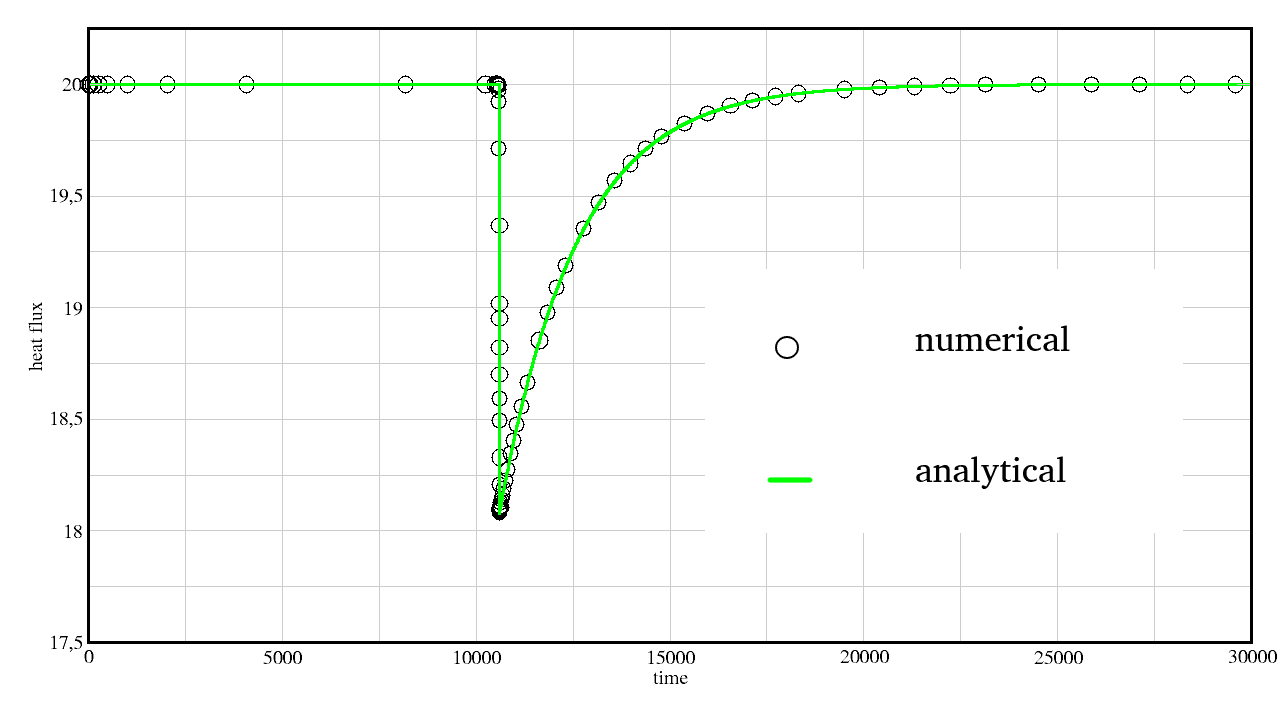Minimization of Frank's energy in unfitted domains
Harmonic map flows are closely related to the minimization of Dirichlet energy \(E\) among the maps between two Riemannian manifolds. Consider the set of maps \(\mathbf{n}\) from a domain \(\Omega{} \in \mathbb{R}^3\) to the unit sphere \(S^2\) embedded in Eucledian space,
\begin{equation}W^{1,2}(\Omega{}, S^2):=\{\mathbf{n} \in W^{1,2}(\Omega, \mathbb{R}^3): \quad{}\mathbf{n}\in S^2 \text{ a.e. in }\Omega\}\,,
\end{equation}
elements of which have finite Dirichlet energy
\(E_F[\mathbf{n}]=\frac{1}{2} \|\nabla \mathbf{n}\|_\Omega^2\).
This constrained energy corresponds to the Oseen-Frank model of liquid crystals. Computation of a minimizer \(\mathbf{n}^*\) of \(E_F\) is a very challenging task. First, the construction of discrete spaces of maps with values in \(S^2\) is not trivial, e.g. polynomial interpolation violates the unit-length constraint. Another issue is that the Euler-Lagrange equation is nonlinear
\begin{align}
\label{system1}\Delta\mathbf{n}^*+|\nabla{}\mathbf{n}^*|^2\mathbf{n}^*&=0\text{ on }\Omega\,, \qquad{} \mathbf{n}^*(x)\in S^2 \text{ on }\Omega\\
\label{system2}\mathbf{n}^*&=\mathbf{g}\text{ on }\Gamma\,, \qquad{} \partial_\nu{}\mathbf{n}^*=0 \text{ on }\partial\Omega{}/\Gamma
\end{align}
Instead of the finding solutions of Euler-Lagrange equation, it is suggested to solve a constrained evolution equation for the time-dependent map \(\mathbf{n}(t)\) and Lagrange-multiplier \(\lambda(t)\) of the unit-length constraint: given the initial guess \(\mathbf{n}^{0}\) , we conduct a constrained *-gradient flow \((\mathbf{n}(t), \lambda(t))\in H_\mathbf{g}\times L^2(\Omega)\) on \([0,T]\) with respect to the metric induced by a \(\|\cdot\|_*\) norm in order to arrive at an approximation of the minimizer \(\mathbf{n}^*\):
\begin{align}
(\mathbf{n}_t(t), \mathbf{m})_*&=-\left<\partial_{\mathbf{n}}L_{\mathbf{g}}[{\mathbf{n}(t)},{\lambda(t)}],\mathbf{m}\right>\\
0&=\left<\partial_{\lambda}L_{\mathbf{g}}[{\mathbf{n}(t)},{\lambda(t)}],\mu\right>\,
\end{align}
for all \((\mathbf{m},\mu) \in H_0 \times W^{-1,2}(\Omega{})\), where the Lagrangian is penalised to enforce the Dirichlet boundary condition:
\begin{equation}
{L}_{\mathbf{g}}[\mathbf{n},\lambda]=\int_{\Omega}\frac{1}{2}|\nabla\mathbf{n}|^2+\int_{\Omega}\frac{\lambda}{2}(\mathbf{n}\cdot\mathbf{n}-1)+\int_{\Gamma}\frac{1}{2\epsilon}(\mathbf{g}-\mathbf{n})^2,
\end{equation}
We developed an unfitted method that relies on an uniform background mesh that allows for an arbitrary position of a curved boundary including its continuous deformations.
